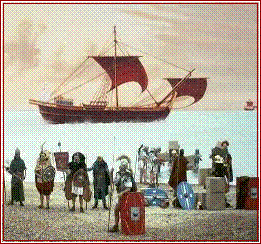
|
To contact us: |


|
For many the Legion and its individual Legionary, represent the true might and power of Roman culture. Prior to the Roman Army there was no true free standing armed forced in the Mediterranean basin. The Greeks came the closest but failed to make the required changes to their politics and recruitment techniques to truly capitalise upon the extent of their culture and its expansion. During this time, the 1st to 2nd Century AD a soldier citizen would be expected to carry out 20 years of active service in the work of the Empire, joining with a letter of recommendation at (preferably) a young age he could look to retire from the army with a lump sum pension at around 35-45 years of age. During his service he might be expected to be drafted anywhere within the Empire. LEG II AVG saw itself posted all across modern Europe over a period of some 150 years until it stabilised in the United Kingdom. Legionaries were not allowed to marry, although it is thought that some certainly had 'wives' if not by certificate then in name, although officers were permitted to marry. |




|
Life In The Legion |
